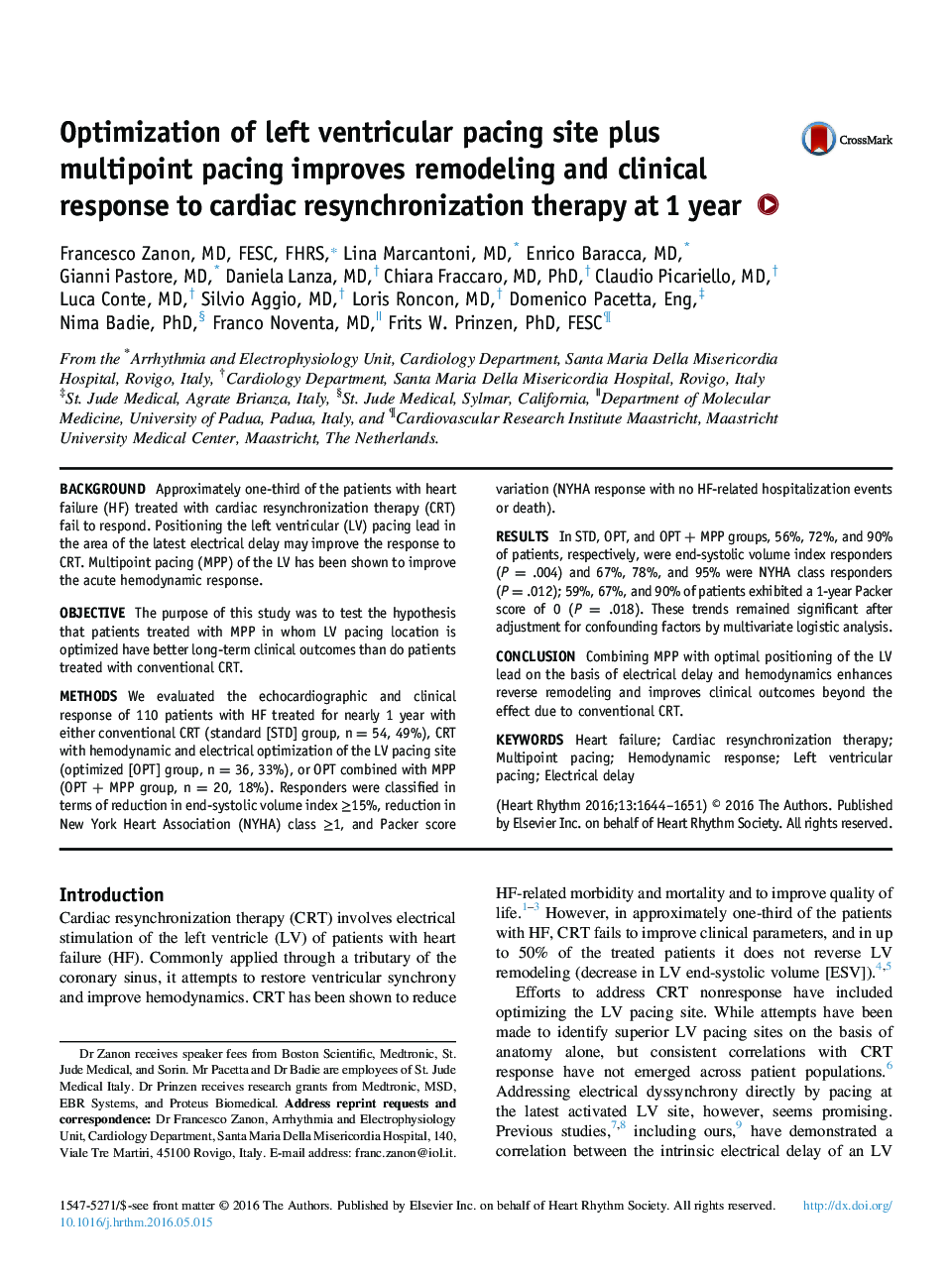| Article ID | Journal | Published Year | Pages | File Type |
|---|---|---|---|---|
| 5959053 | Heart Rhythm | 2016 | 8 Pages |
BackgroundApproximately one-third of the patients with heart failure (HF) treated with cardiac resynchronization therapy (CRT) fail to respond. Positioning the left ventricular (LV) pacing lead in the area of the latest electrical delay may improve the response to CRT. Multipoint pacing (MPP) of the LV has been shown to improve the acute hemodynamic response.ObjectiveThe purpose of this study was to test the hypothesis that patients treated with MPP in whom LV pacing location is optimized have better long-term clinical outcomes than do patients treated with conventional CRT.MethodsWe evaluated the echocardiographic and clinical response of 110 patients with HF treated for nearly 1 year with either conventional CRT (standard [STD] group, n = 54, 49%), CRT with hemodynamic and electrical optimization of the LV pacing site (optimized [OPT] group, n = 36, 33%), or OPT combined with MPP (OPT + MPP group, n = 20, 18%). Responders were classified in terms of reduction in end-systolic volume index â¥15%, reduction in New York Heart Association (NYHA) class â¥1, and Packer score variation (NYHA response with no HF-related hospitalization events or death).ResultsIn STD, OPT, and OPT + MPP groups, 56%, 72%, and 90% of patients, respectively, were end-systolic volume index responders (P = .004) and 67%, 78%, and 95% were NYHA class responders (P = .012); 59%, 67%, and 90% of patients exhibited a 1-year Packer score of 0 (P = .018). These trends remained significant after adjustment for confounding factors by multivariate logistic analysis.ConclusionCombining MPP with optimal positioning of the LV lead on the basis of electrical delay and hemodynamics enhances reverse remodeling and improves clinical outcomes beyond the effect due to conventional CRT.
